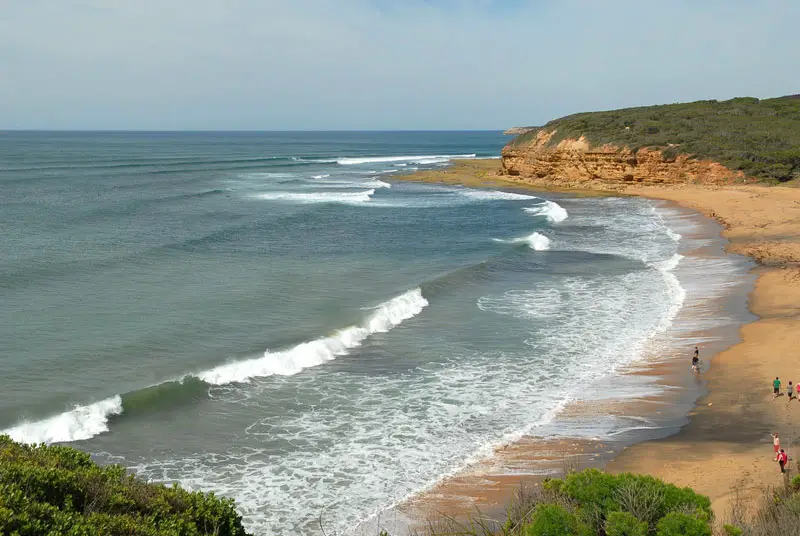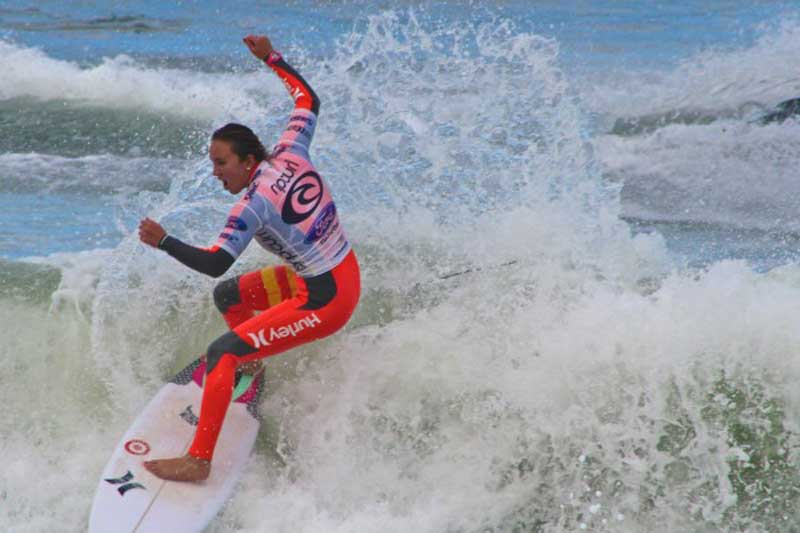Australia For Everyone: Canberra

Bells Beach
One of Australia’s most famous surfing beaches, Bells Beach is famous for its world-renowned Easter Surfing Classic. Bells Beach is located near Torquay on the southern coast of Victoria, 71 km south-west of Melbourne.Bells Beach is essentially rather small bay situated between two equally unremarkable headlands. It is the swells from the Southern Ocean, which slow down and steepen over the reef-strewn shallows, that foment the outstanding surf. The consistency for which the beach is also famed arises, in part, from the fact that the bottom is not especially sandy and hence is not prone to shifting sand bars which would create great variability. Combined with spring tides and a strong nor’westerly the waves can rise to five metres, although three to four is the average.
To the north-east of Bells are sheer cliffs, below which are beaches known to local surfers as ‘Winkipop’, ‘Boobs’ and ‘Steps’. To the south-west is an ‘optional dress beach’.

Carissa Moore, Bells Final 2013
Most famously, Bells Beach is the site of a surfing contest which was first held in 1962, although the competition attained a more official status when it became an interstate Easter event in 1963, making it the longest-running professional surfing event in the nation and the world. The consistency and excellence of the surf saw Bells become the site of the world amateur board-riding championships in 1970 and, in the early 1970s, the first surfing reserve in the world. It has since become a fixture on the world professional circuit. In the year 2000 it was listed as a site of historical significance by the Victorian branch of the National Trust.
The men’s contest is now known as the Rip Curl Pro and the women’s event has an uncertain present and future. Although prize-money was, for many years, rather low by world standards, this changed in the 1990s when the importance of the event, and the beach which engendered it, was recognised by an Act of Parliament that declared the site a recreation reserve.
- Website
The beach is named after the family that took up the first pastoral run hereabouts in the 1840s. It is claimed the surfing potential of the site was first recognised in 1949 by Vic Tantau, Peter Troy and Owen Yateman. Access was a considerable problem. An old road led to within 45 minutes walk of the beach, but the heavy 5-metre boards then in fashion proved too difficult to drag through the bush, necessitating rubber mats. However, when shorter boards went into production in 1957 the beach was more heavily frequented.
Negotiations with a local landowner in 1958 enabled road access to the beach although the failure of visitors to close farm gates caused friction and rendered the route problematic. Eventually Torquay surfer and Olympic wrestler Joe Sweeney hired a bulldozer and cleared a road along the Bells cliff from the old Cobb & Co road, from where the concrete wave now stands down to the beach, thereby facilitating access from Jan Juc. He then charged one pound per surfer to recover his expenses. This is now part of the Torquay to Anglesea walking track.
The first surfing contest was organised by Vic Tantau and Peter Troy and held on the Australia Day weekend in January 1962. The competition was subsequently changed to Easter in 1963, thereby opening it up to interstate competition. This makes it the longest-running professional surfing event in Australia and the world and one of Victoria’s six “Hallmark International Sporting Events”. The consistency and excellence of the surf saw Bells become the site of the world amateur board-riding championships in 1970 and, in the early 1970s, the first surfing reserve in the world. It has since become a fixture on the world professional circuit. In the year 2000 it was listed as a site of historical significance by the Victorian branch of the National Trust.








